2021 Kawasaki KLR650
A lot had been hoped for ahead of an updated KLR650 being released from Kawasaki, but after details of the new model were released overnight the reactions across social media have been harsh to say the least. After only minimal updates made over the 33-year life cycle of the model, Kawasaki have not really broke the mould too much with this latest re-design and it seems the punters are not happy….
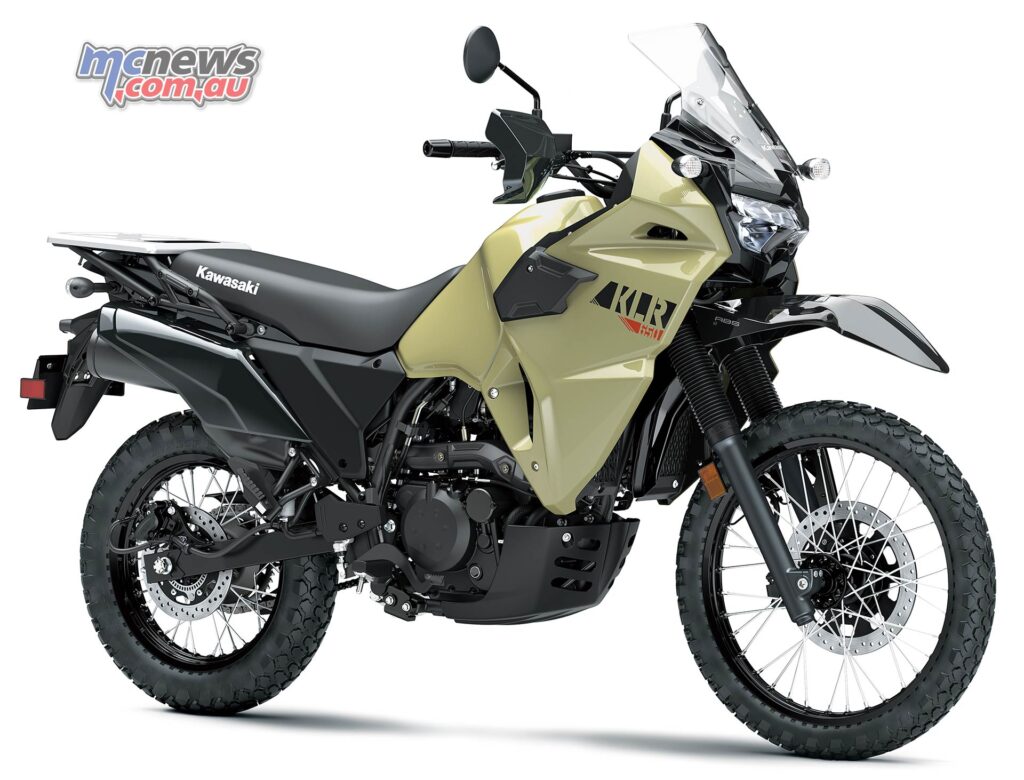
“Participation prize for the lads at Kawasaki,” said one pundit, while from another, “How the hell do you make a single 650cc weigh 220kg?”
“What’s wrong with these Japanese brands? Can’t even add a 6th cog… No wonder the Europeans took over … innovation is at zero from Japan.”
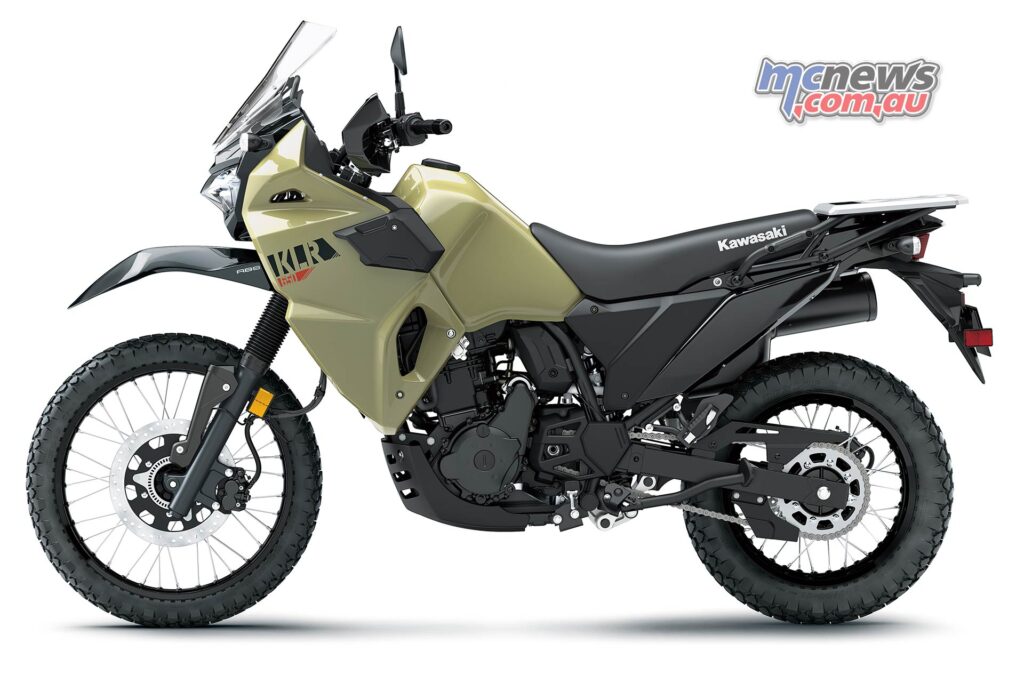
The comments from the unsocial media certainly are cutting, but are they justified? In part, perhaps…
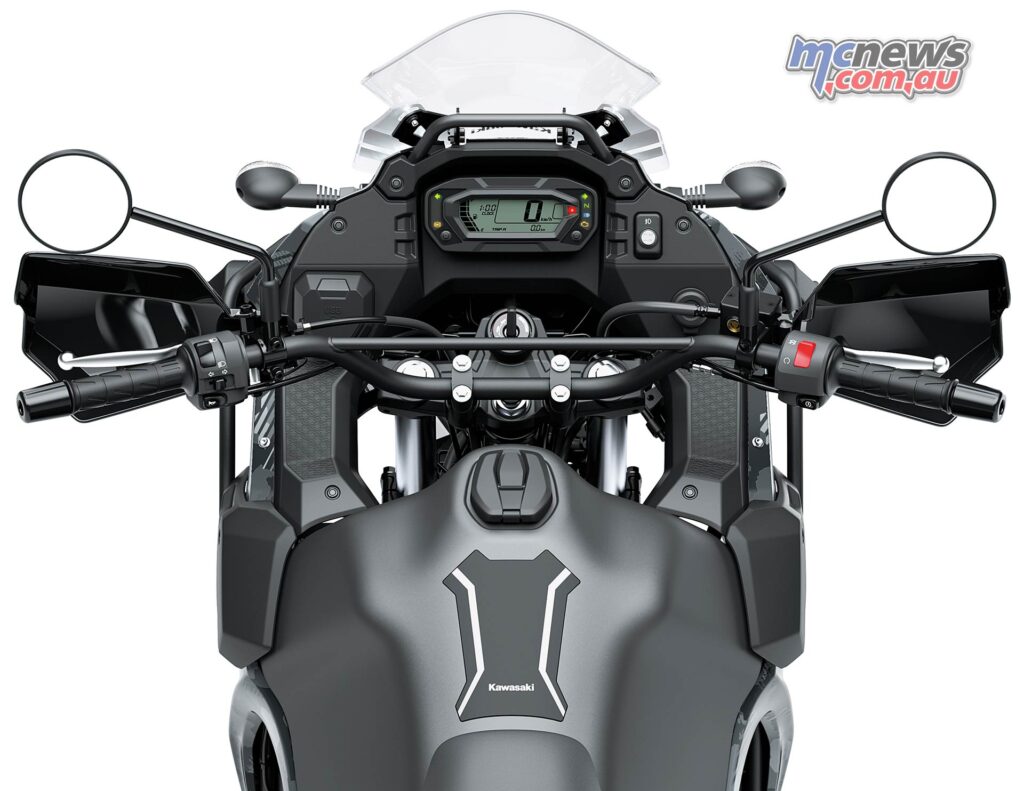
Still, the KLR650 was never a sales success on the back of power or light weight. It sold on the back of competitive pricing, and a solid reputation as a dependable mount with enough off-road and on-road performance with which to go adventure-touring on a budget.
The move to EFI, more bodywork, ABS and some added features have added over 20 kg to the waisteline of the KLR with Kawasaki quoting a wet weight of 210 kg for the base model, which then blows out to 222 kg in Adventure guise.
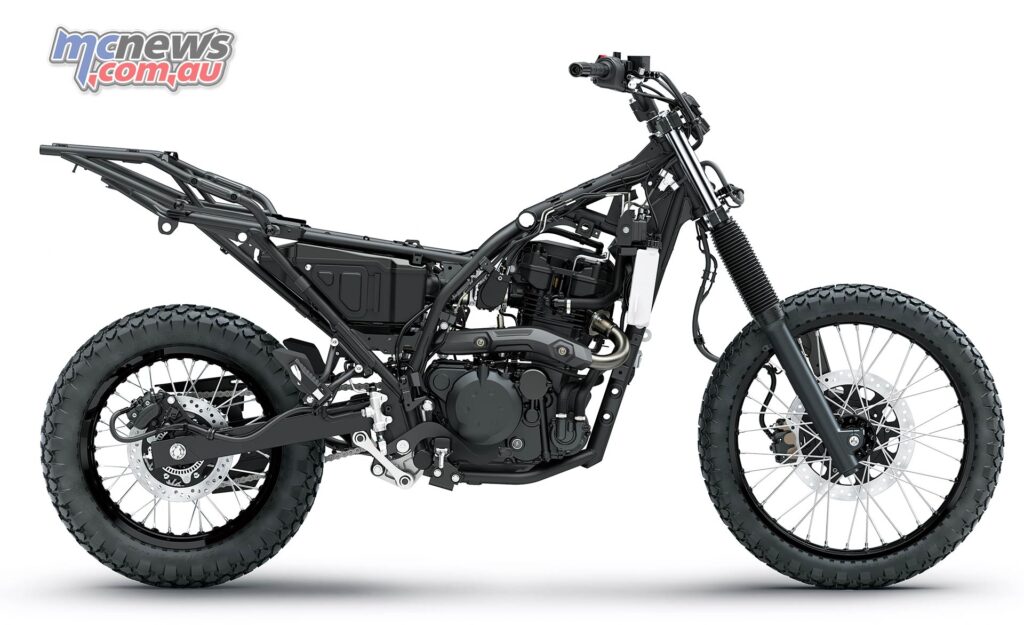
* Swingarm was extended by 30 mm.
* Swingarm pivot shaft diameter was increased from ø15 mm to ø17 mm.
The Adventure model, which will come to Australia alongside the base model to make for a two-model line-up, adds fog lamps, panniers and frame sliders along with DC and USB sockets.
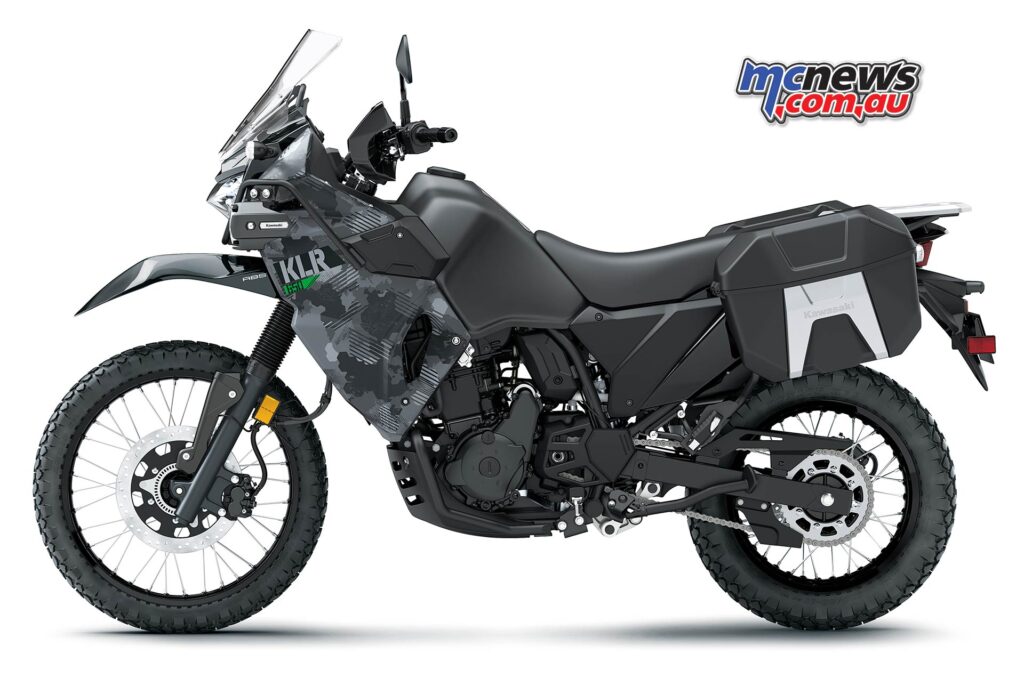
Both models have ABS and bigger front stoppers.
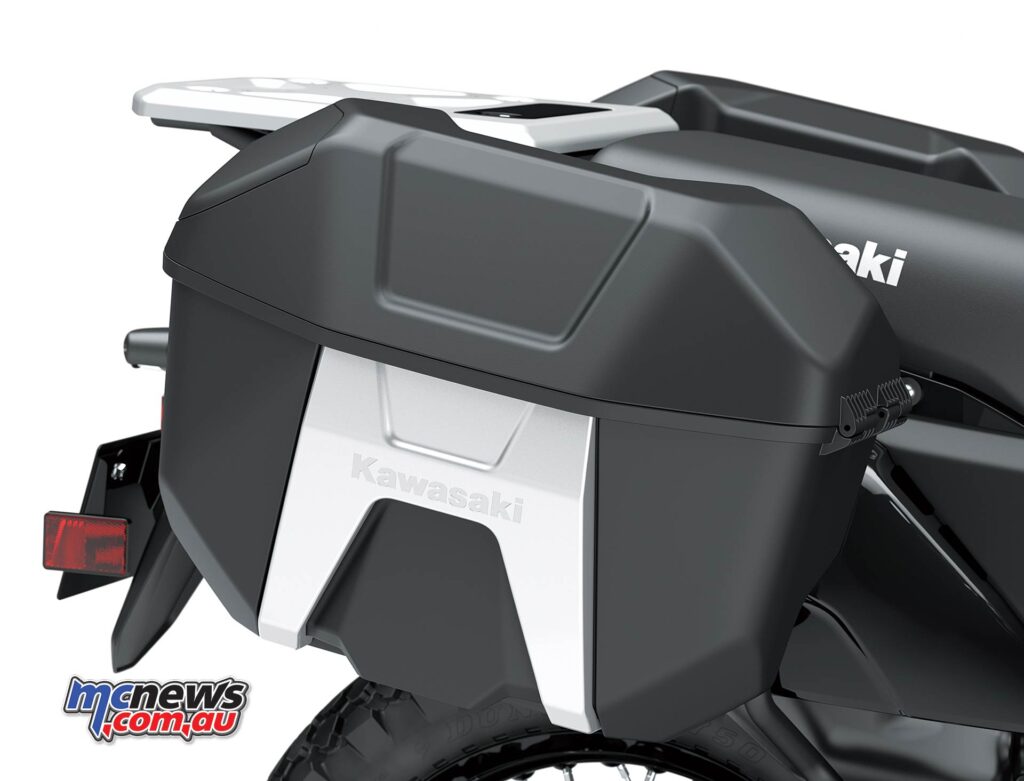
The 652 cc liquid-cooled single remains quite a low specification unit despite the addition of EFI. With only 38.5 horsepower at 6000 rpm it actually seems to have lost quite a bit of horsepower and the move to EFI is obviously only to suit emissions authorites rather than performance.
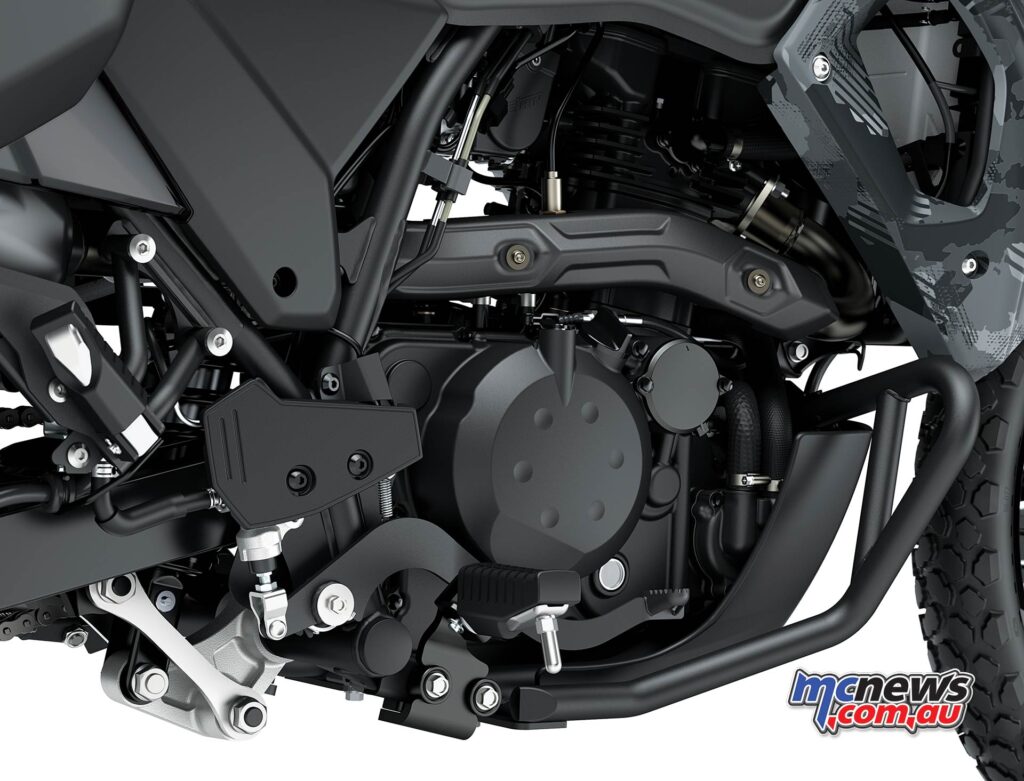
The header pipes are much narrower than before and along with new cam profiles to help mid-range performance. A catalytic converter has been added to help meet emissions requirements.
Kawasaki are also claiming much improved durability via strengthened internals and a higher generator output (increased from 17 A to 26 A), to help cater for the demans of the EFI and ABS systems, along with the ability to keep the power up to your electronic devices.
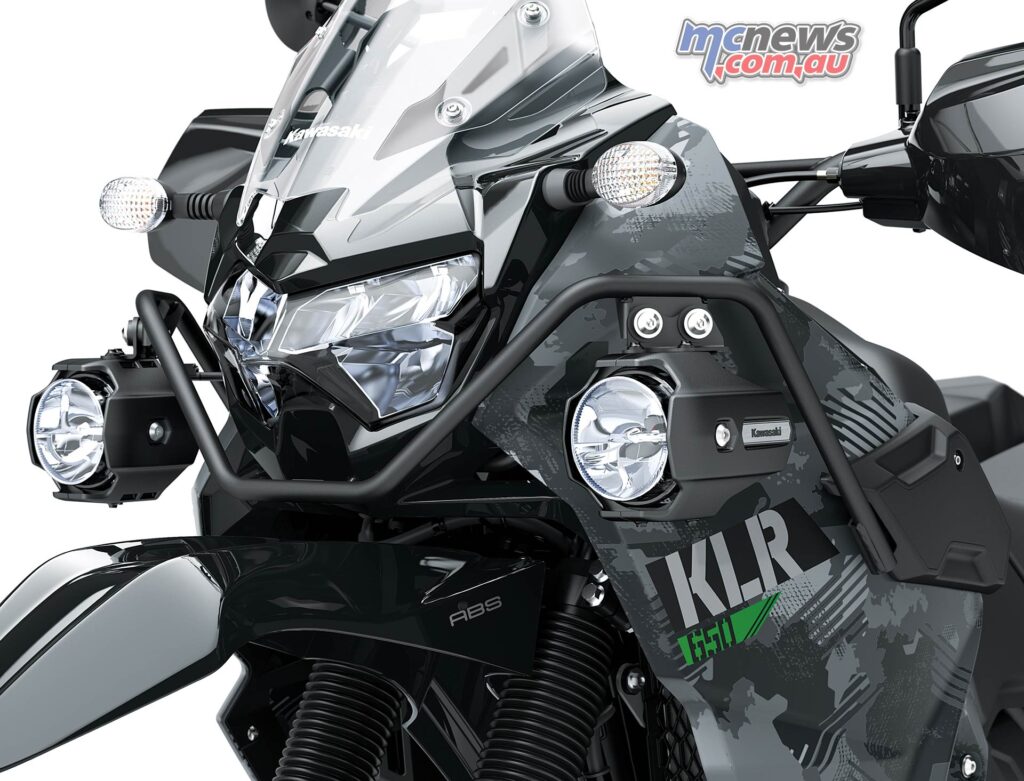
The gearbox and clutch have also both been made more durable.
The swing-arm is longer and the rear sub-frame is no longer independent of the main frame.
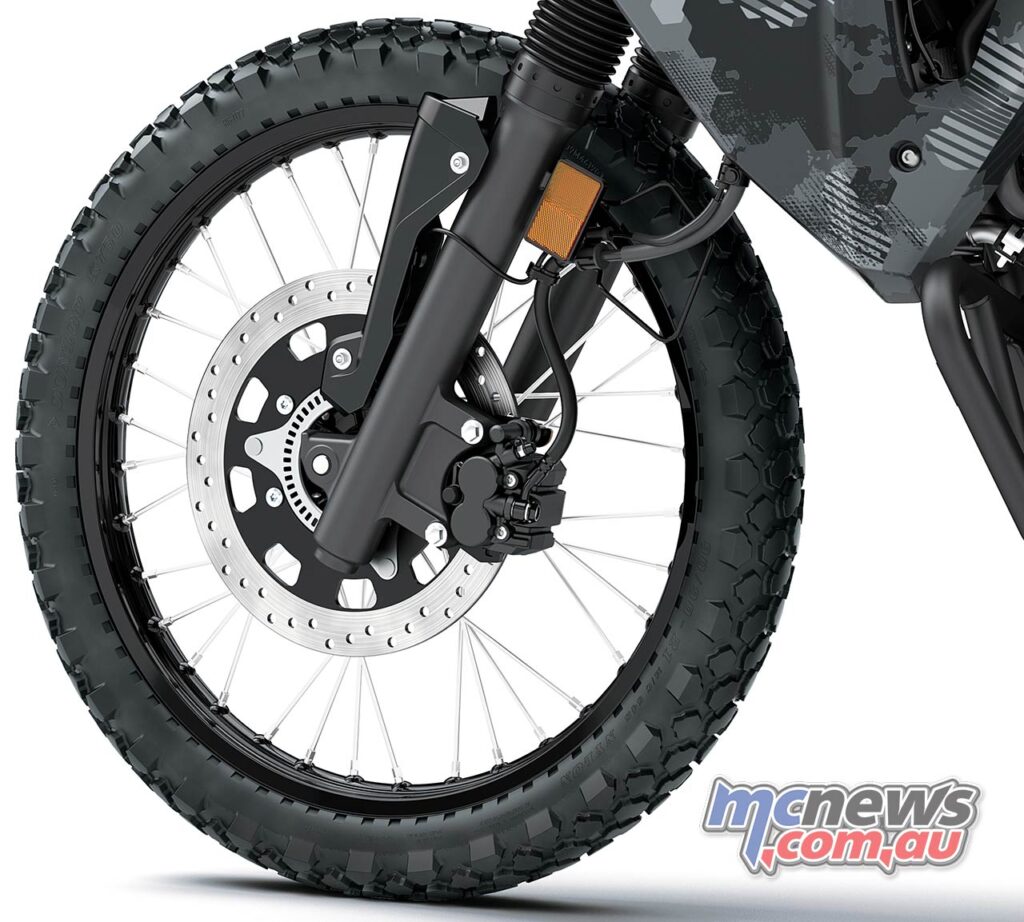
At 23-litres the fuel tank is a litre bigger than before which combined with the EFI system should see the KLR push touring ranges out towards 500 kilometres.
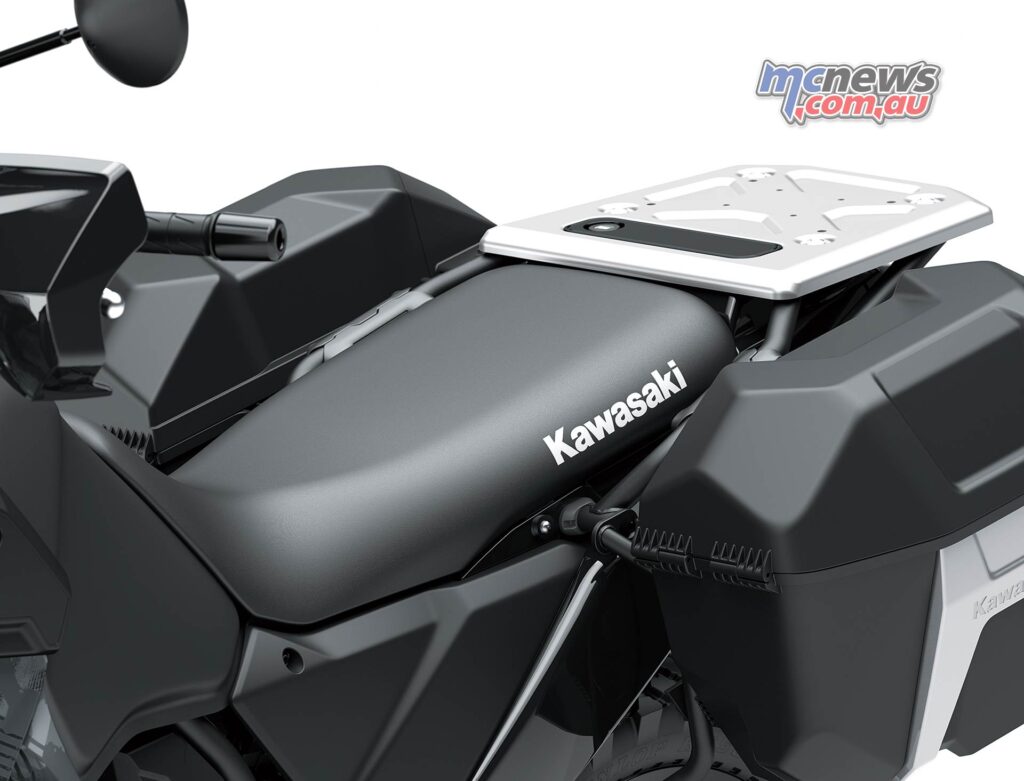
Weather protection and comfort levels look to have perhaps been improved while at 870 mm the seat height is 20 mm lower than before. Kawasaki claim that vibrations have been reduced and the windshield can be set in two positions.
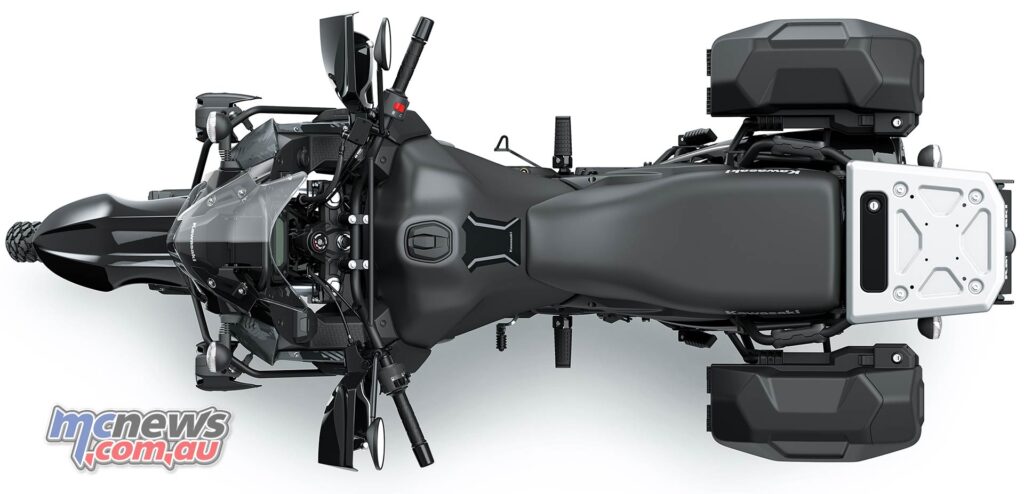
LED lighting now illuminates the path ahead and the KLR650 continues to run tubes inside the 90/90-21 and 130/80-17 dual-purpose tyres.
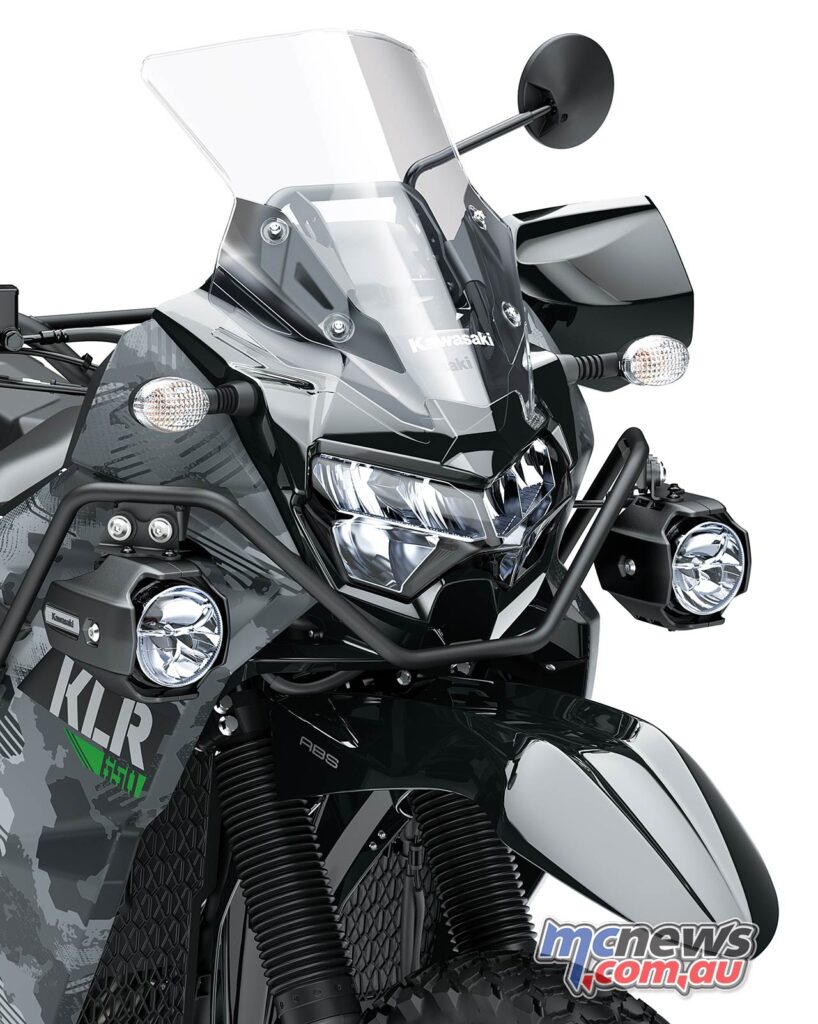
All-digital instrument 17 panel offers at-a-glance information care of a large-display easy-to-read LCD screen with white backlighting. Features include a speedometer, odometer, dual trip meters, fuel gauge, clock and indicator lamps. The narrowed-down display list prioritises visibility of the speedometer and fuel gauge.
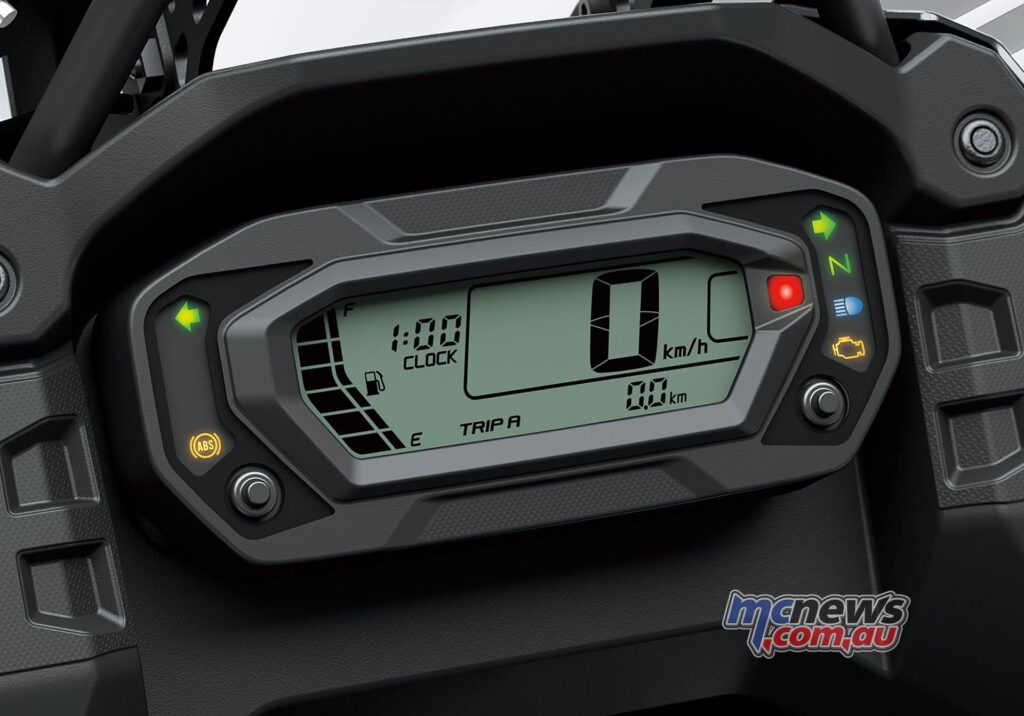
The 2021 KLR650 and KLR650 Adventure models are expected to land in Australia later this year.
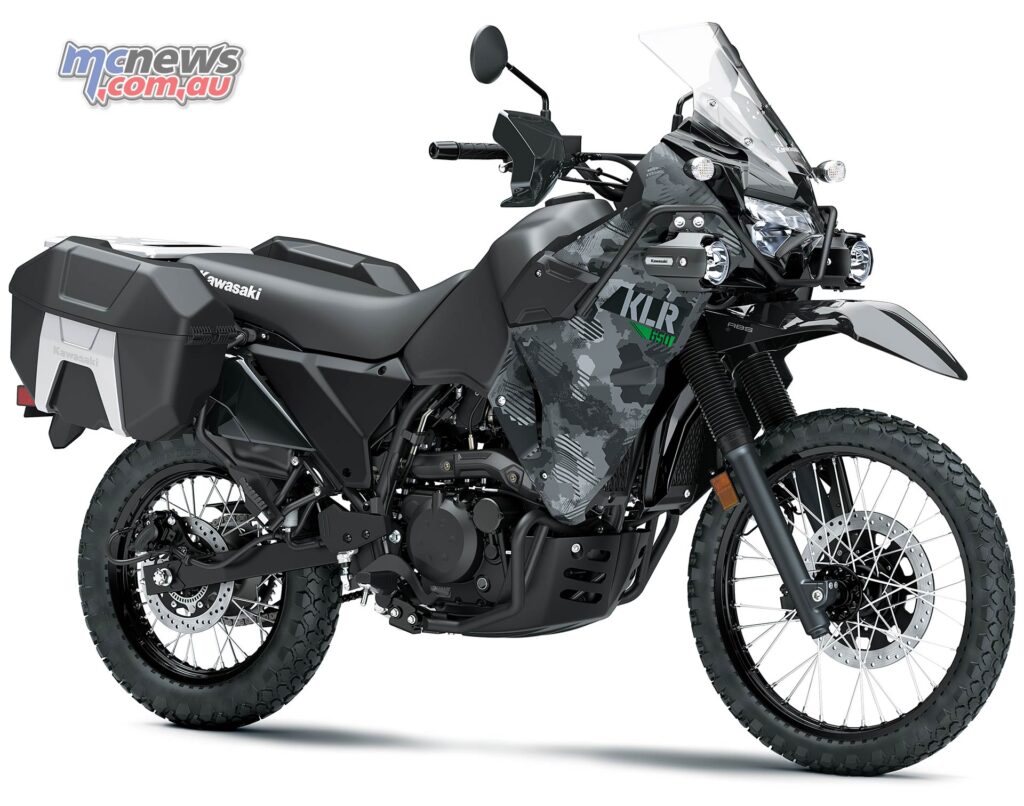
2021 Kawasaki KLR650 Specifications
| 2021 Kawasaki KLR650 Specifications | |
| Engine | Four-Stroke, single cylinder, DOHC, 652 cc |
| Bore x Stroke | 100.0 x 83.0 mm |
| Compression Ratio | 9.8:1 |
| Claimed Power | 38.5 hp at 6000 rpm |
| Claimed Torque | 51.5 Nm @ 4500 rpm |
| Induction | DFI w/ 40 mm Throttle Body, CDI |
| Gears | Five-speed, return shift with wet multi-disc manual clutch |
| Clutch | N/A |
| Frame | Tubular, Semi-Double Cradle |
| Forks | 41 mm telescopic fork / 228 mm |
| Shock | Uni-Trak gas charged shock with piggyback reservoir with adjustable rebound damping and spring preload / 185 mm |
| Tyres | 90/90-21 (F), 130/80-17 (R) |
| Front Brakes | Single 300 mm disc with two-piston calipers, ABS |
| Rear Brake | Single 240 mm disc with single-piston caliper, ABS |
| Electronics | N/A |
| Instrumentation | LCD display |
| Dry Weight | N/A |
| Kerb Weight | 210 kg (base bike) – 222 kg in Adventure |
| Seat Height | 870 mm |
| Wheelbase | 1540 mm |
| Rake / Trail | 30.0°/ 122 mm |
| Fuel Capacity | 23 L |
| Available | Second half of 2021 |
| Price | TBC |























